Слайд 2Zimbabwe history
The earliest population of Zimbabwe is the people of the Khoisan

race (the Bushmen). They were supplanted by the ancestors of modern Shona, who came from the north to the beginning. 2nd mil. AD In the 12th century in the east of the present-day Zimbabwe, the state of Monomotopes, which existed for several centuries, arose. In the 16th century he tried to capture the Portuguese, but suffered a defeat.
Слайд 3Geographical position
Republic of Zimbabwe, a state in southern Africa. Zimbabwe is landlocked
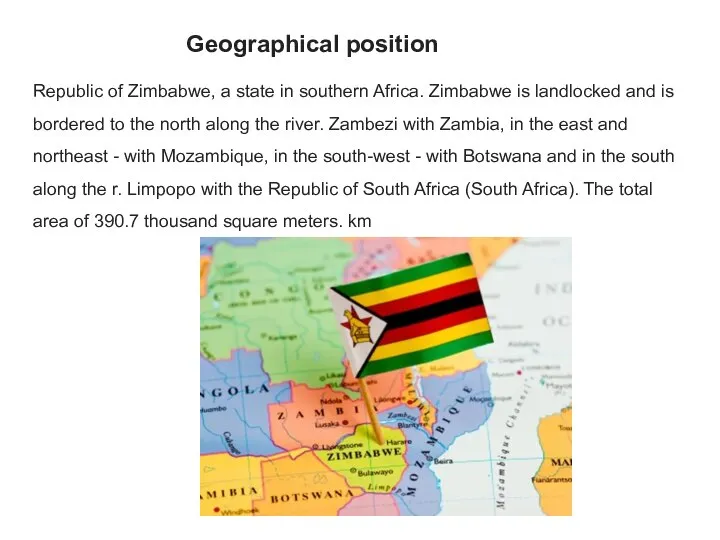
and is bordered to the north along the river. Zambezi with Zambia, in the east and northeast - with Mozambique, in the south-west - with Botswana and in the south along the r. Limpopo with the Republic of South Africa (South Africa). The total area of 390.7 thousand square meters. km
Слайд 4Political system
The state structure of Zimbabwe is based on the principles of

a presidential republic. According to the Constitution of 2013, the president is the head of state and government. Executive power is exercised by the government.
Слайд 5Population and language
From about the 12th century, the states of Greater Zimbabwe
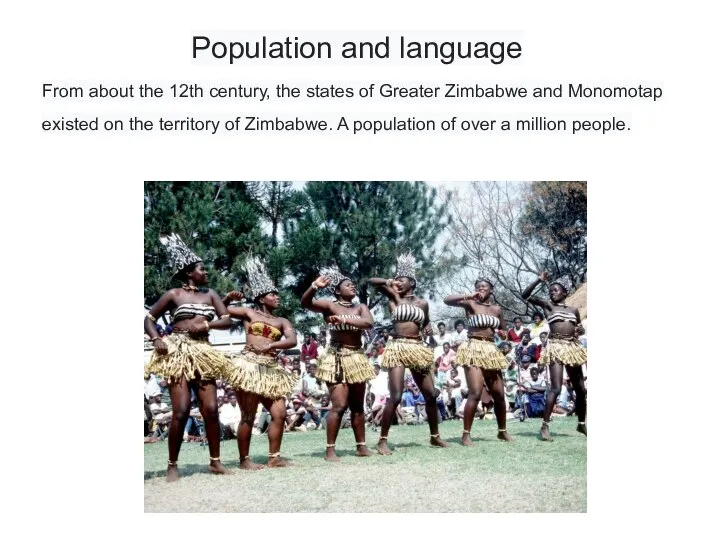
and Monomotap existed on the territory of Zimbabwe. A population of over a million people.
Слайд 6In Zimbabwe, 16 official languages are English, Venda, sign languages, Kalanga, Khoisan,
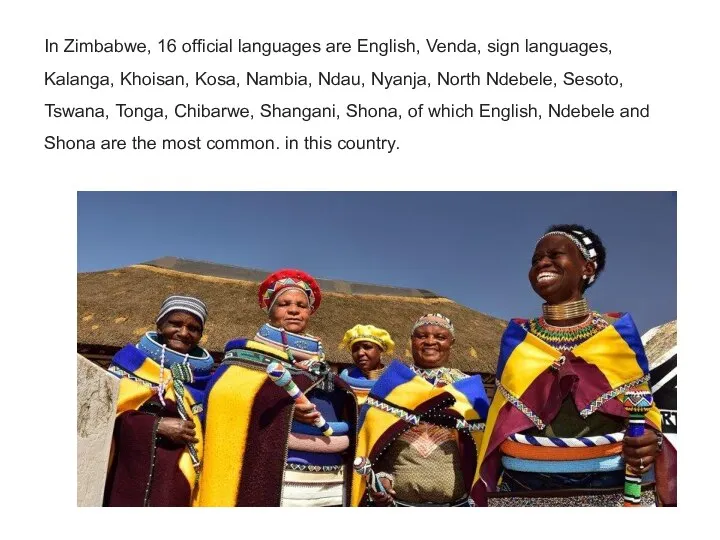
Kosa, Nambia, Ndau, Nyanja, North Ndebele, Sesoto, Tswana, Tonga, Chibarwe, Shangani, Shona, of which English, Ndebele and Shona are the most common. in this country.
Слайд 7Religion
Approximately 85% of the country's inhabitants are Christians. Approximately 62% of the
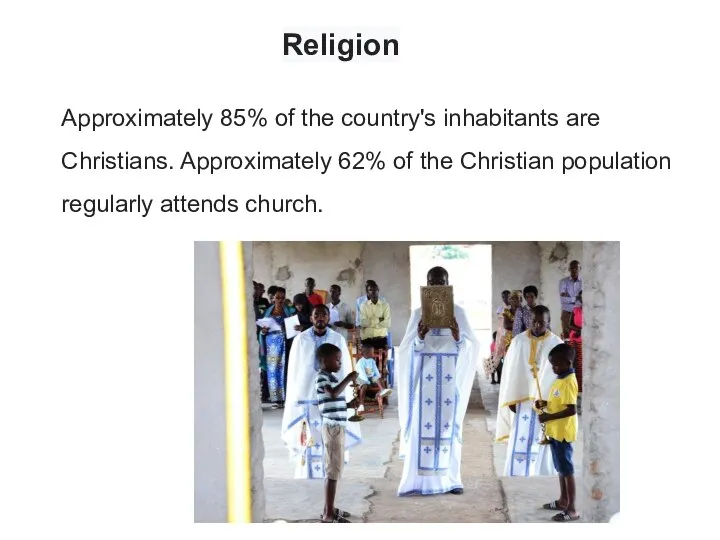
Christian population regularly attends church.
Слайд 8Monetary unit of Zimbabwe
The monetary unit of the Republic of Zimbabwe is
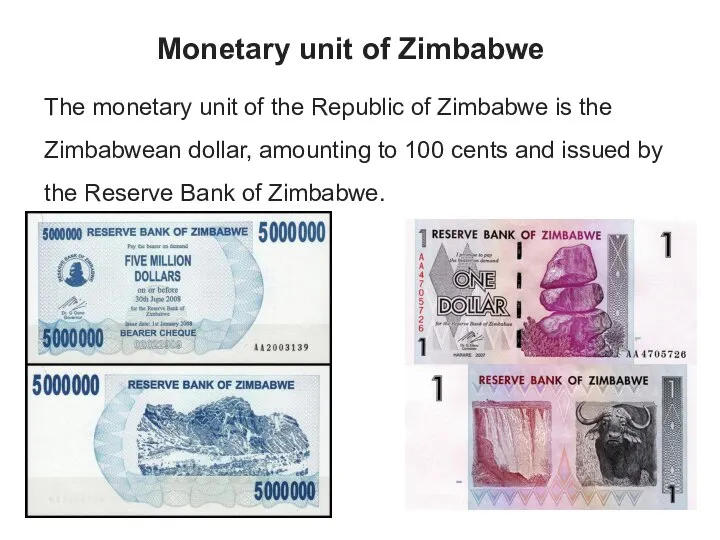
the Zimbabwean dollar, amounting to 100 cents and issued by the Reserve Bank of Zimbabwe.
Слайд 9Economy of Zimbabwe
In Zimbabwe, due to catastrophic inflation rates, the central bank
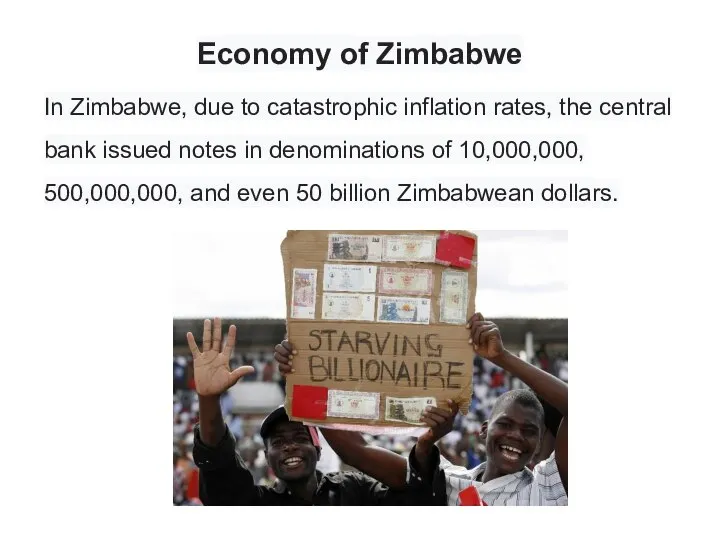
issued notes in denominations of 10,000,000, 500,000,000, and even 50 billion Zimbabwean dollars.
Слайд 10In 2001, unemployment rose to 60% (estimated). The government fixed inflation at
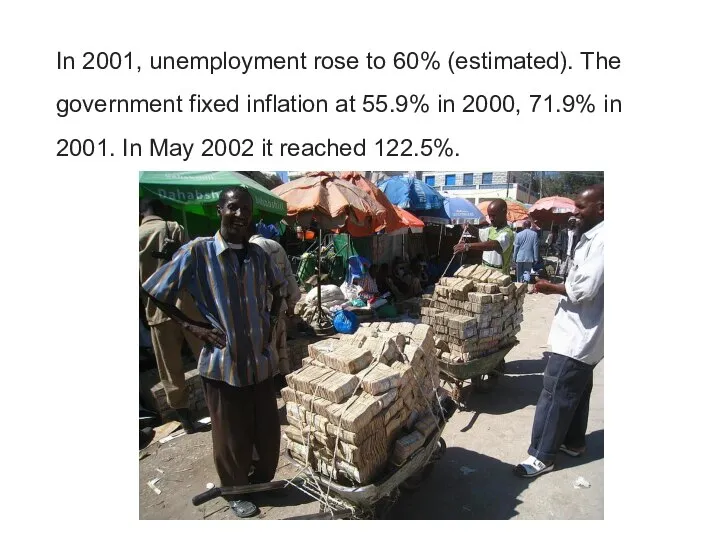
55.9% in 2000, 71.9% in 2001. In May 2002 it reached 122.5%.
Слайд 11Country foreign policy
Foreign Policy Zimbabwe - Bilateral relations of independent Zimbabwe with
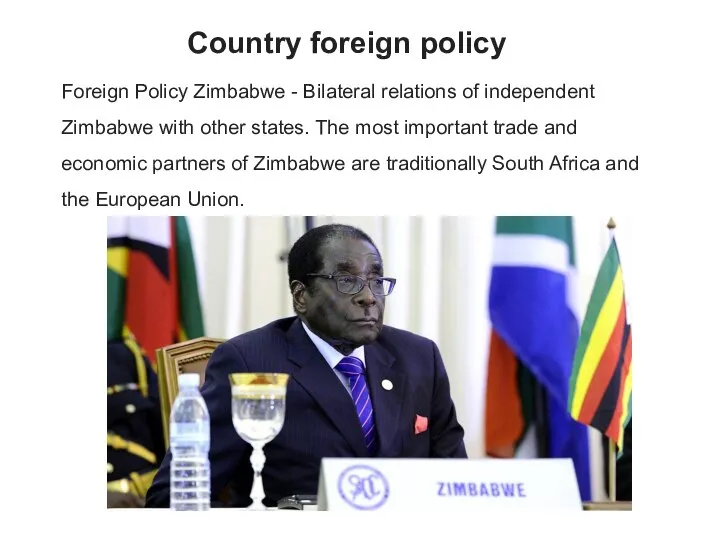
other states. The most important trade and economic partners of Zimbabwe are traditionally South Africa and the European Union.
Слайд 12Education
The system of general and higher education in Zimbabwe is developed quite
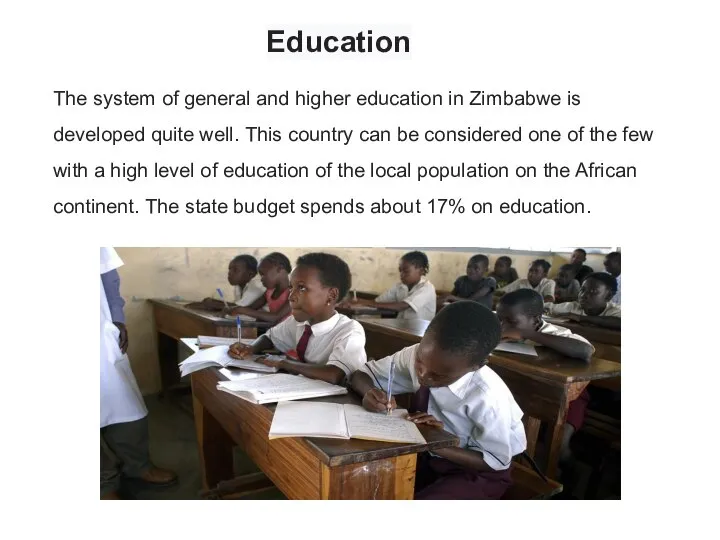
well. This country can be considered one of the few with a high level of education of the local population on the African continent. The state budget spends about 17% on education.











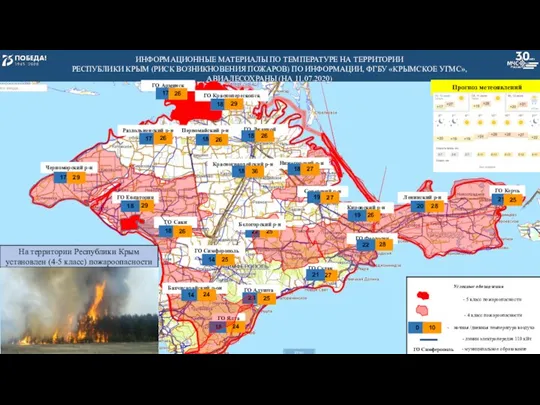 Информационные материалы по температуре на территории республики Крым
Информационные материалы по температуре на территории республики Крым 20140928_poyas_gor_yuzhnoy_sibiri
20140928_poyas_gor_yuzhnoy_sibiri Люблю тебя, мой край родной
Люблю тебя, мой край родной Почвы мира
Почвы мира Князівство Монако
Князівство Монако Лето в Башкирии
Лето в Башкирии Общие сведения о грунтах и методах их разрушения
Общие сведения о грунтах и методах их разрушения 20170705_8pochva
20170705_8pochva Любимый город - Кузнецк -12
Любимый город - Кузнецк -12 Презентация на тему Состав северного района России
Презентация на тему Состав северного района России  Географическое положение Урала
Географическое положение Урала Удивительный мир Австралии. География материков и океанов. 7 класс
Удивительный мир Австралии. География материков и океанов. 7 класс Презентация на тему Боливия
Презентация на тему Боливия  Армения
Армения 7 чудес Каслинского района
7 чудес Каслинского района История края, население, природа республики Алтай
История края, население, природа республики Алтай Равнины и горы России
Равнины и горы России Презентация на тему Чудеса природы
Презентация на тему Чудеса природы  Океаны. 7 класс
Океаны. 7 класс 20140108_polyarnye_oblasti
20140108_polyarnye_oblasti Презентация на тему Природные ресурсы Земли. Ресурсообеспеченность
Презентация на тему Природные ресурсы Земли. Ресурсообеспеченность  Лондон. Достопримечательности
Лондон. Достопримечательности Відпочинок. Подорожі
Відпочинок. Подорожі Attractions_du_monde
Attractions_du_monde Презентация на тему Горные породы и минералы (6 класс)
Презентация на тему Горные породы и минералы (6 класс)  Основы кораблевождения
Основы кораблевождения Вокруг света за 20 минут
Вокруг света за 20 минут 20140121_vost.evr_
20140121_vost.evr_